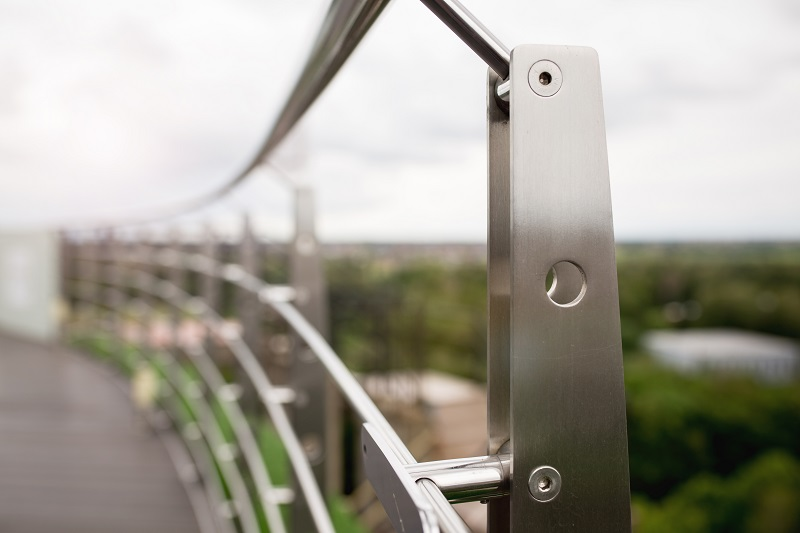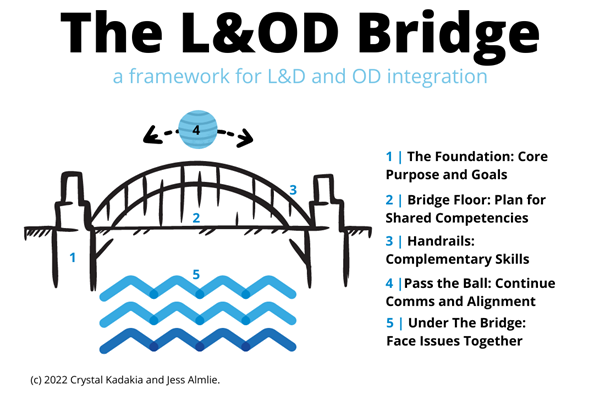ATD Blog
The Bridge Between L&D and OD: The Handrails
Fri Sep 23 2022

In the last two blogs, we have shared the initial steps of our framework to build a bridge between learning and development (L&D) and organization develoment (OD). The business impact we hope to achieve may best be achieved together, not alone. By drawing from the expertise of both fields, the solutions we collectively design and implement will be more effective in meeting business needs.
We completed our bridge building prework by exploring the differences in each field’s origin story as insight into our diverse thought patterns. Next, we began with step 1—laying the bridge’s foundation by investigating together and defining the core purpose for a business initiative. We continued by creating the floor of the bridge by building a plan to use our shared skills and competencies (step 2). This week, we construct the bridge’s handrails in step 3 of our five-step build.

Step 3. Install the Bridge Handrails: Lean on Each Others’ Complementary but Unique Strengths
Every good bridge needs handrails. They serve as something to lean on when we need to steady ourselves or require additional support. In our L&OD Bridge Framework, the handrails are the complementary but unique strengths of both fields.
OD’s strengths: systems thinking and organizational assessments. One of OD’s strengths lies in formally analyzing the organization with a systematic lens. The field uses frameworks such as the STAR Model, Gilbert’s Six Boxes, impact mapping, human performance improvement, and appreciative inquiry to understand and assess the state of the organization overall.
We can lean on OD’s strengths to build a bigger picture of the problem and identify when a solution is needed outside of learning. We can also use this expertise to identify what needs to change: work processes, organizational structure, people’s capability, decision making authority, rewards systems, expectations, or other aspects.
L&D’s strengths: models to design effective learning transfer. L&D practitioners are experts in designing solutions where learning sticks. With an eye on business impact and the know-how to effectively improve knowledge and skills, L&D creates the assets and experiences needed for behavior change. Once a potential change is identified, OD can tap into L&D’s strengths to develop structured learning experiences based on the neuroscience of learning.
Modern L&D can provide a wealth of modalities—programs, job aids, communities of practice, online courses, videos, and more—to effectively transfer learning.
Coming Together
Using these strengths as a guide, together we can create the project strategy, approach, and milestones that will mark progress towards our goal. Then, we can build the tasks that help us achieve those milestones.
Divvying up tasks calls for leaning on one handrail or another. Lean on the handrail of OD’s expertise to see the big picture, analyze root causes, and design non-curricula–based interventions, such as dialogues, coaching, or team dynamic exploration. Lean on the L&D handrail when designing effective learning interventions—both traditional programmatic and more modern immediate and social learning methods—from outcome to evaluation.
Our bridge now has a foundation, a floor, and handrails. In the next blog, we will explore our final two steps: defining what is needed above and beneath the bridge to complete the L&OD Bridge Framework.
